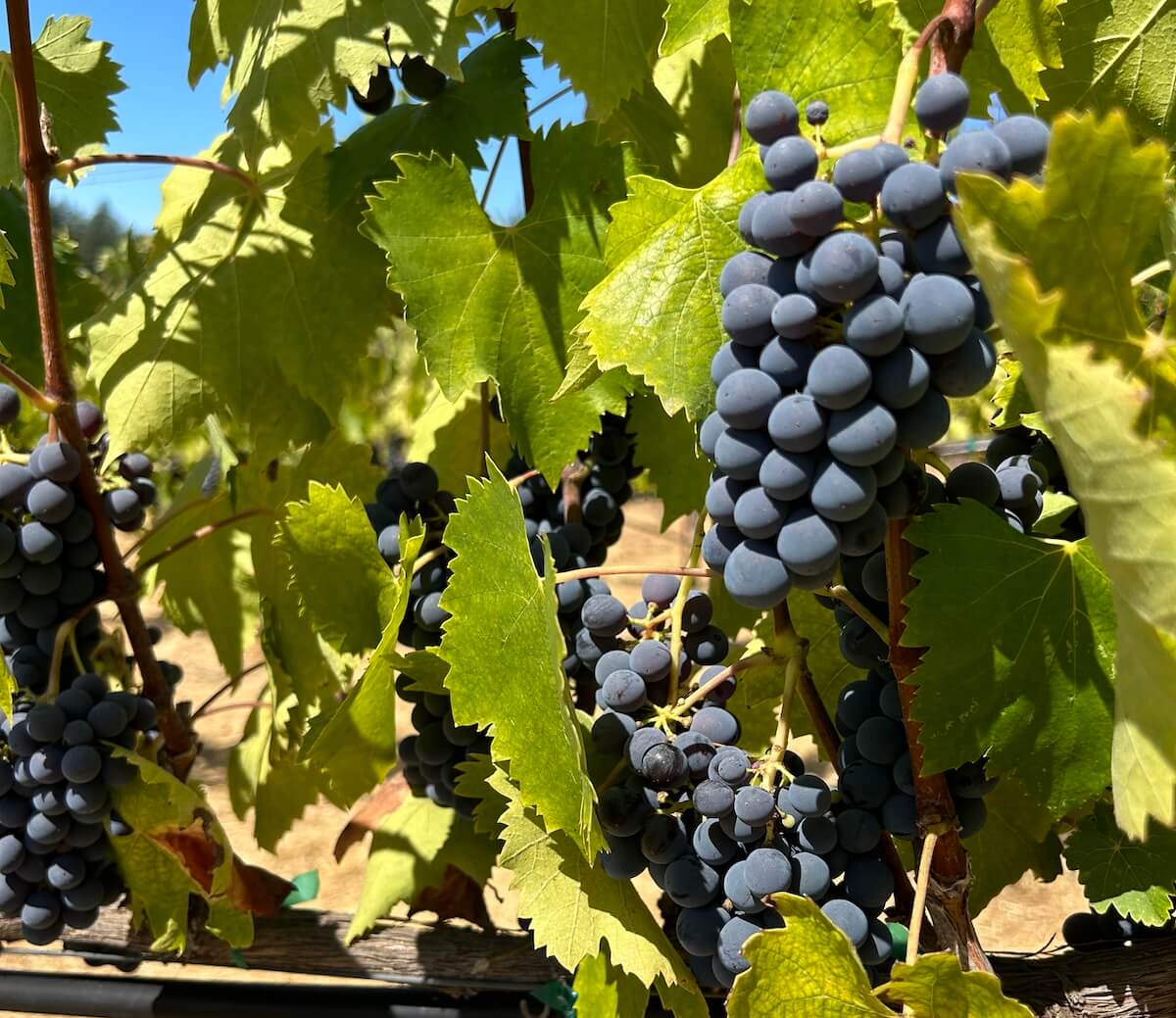Italian wine has long stood for passion, heritage, and complexity. And while we’re thousands of miles from Italy’s rolling hills, we’ve found that those same Italian wine varietals thrive beautifully right here in Sonoma County. At our farm in Healdsburg, these Mediterranean grapes aren’t just surviving; they’re flourishing under the California sun, nurtured by regenerative farming and the kind of minimalism that’s shaped great wines for thousands of years.
We’ve put together this guide to share how Italian grape varieties like Sangiovese, Barbera, and Fiano adapt to Sonoma’s terroir, and how the wines they produce offer a dialogue between climate, culture, and low-intervention craftsmanship. For wine enthusiasts seeking discovery wines beyond the mainstream, these Italian varietals represent a fascinating journey into rare grape varieties that tell stories of both heritage and innovation.
What Makes Italian Wine Grapes Thrive in Northern California?
Italian grapes naturally do well in regions that are like its native land—with warm days, cool nights, and soils that challenge the vines just enough to create character. That’s exactly what we have here in Sonoma County. Our California-Mediterranean climate feels like home. Like central and southern Italian wine regions, Sonoma offers the long ripening windows and balanced acidity these grapes love.
To us, these varietals aren’t imports or novelties. They’re a vital part of our story. Our regenerative farming approach, rooted in biodiversity and balance, reflects the Italian traditions we admire where healthy soil and regenerative practices come first.
The Difference Between an Italian Grape and an Italian Wine
A lot of people use “grape” and “wine” interchangeably, but they’re not quite the same. Especially in Italy. An Italian grape refers to the varietal, like Barbera, Sangiovese, or Vermentino, while Italian wine is the final product made under Italy’s regulations.
For example, Barbera is a grape. In Italy, wines labeled “Barbera d’Alba” or “Barbera d’Asti” follow specific and usually strict DOC or DOCG guidelines set by the regional consortium of “Alba” or “Asti” where the grapes and wines are grown and made.
Here in Sonoma, we work with that same grape but vinify it in a way that reflects our land, climate, and creative philosophy.
Did You Know: Understanding the Italian Wine Classification System: DOC, DOCG, IGT
Italy’s wine classification system protects the identity and quality of its wines. You’ll often see these classifications on Italian wine labels:
DOCG (Denominazione di Origine Controllata e Garantita): The strictest production methods and origin standards with a guarantee of quality.
DOC (Denominazione di Origine Controllata): Strict standards focused on production methods for the region of origin.
IGT (Indicazione Geografica Tipica): Focused on region of origin. Allows for more flexibility for modern or non-traditional wines.
The Difference Between California Grape Labeling vs Italian
In California, labels are more direct and simpler — it’s all about varietal and appellations. When you see “Sangiovese – Dry Creek Valley” in a bottle, that tells you about the grape and where it was grown. Unlike Italy, we are not bound by rigid classification systems that demand specific grapes and production methods. Here, we have complete freedom to grow the grapes we want. This flexibility allows us to explore all the unique varieties that thrive in our dry, warm-days-cool-nights climate.
At DaVero, we choose Italian and Mediterranean varieties that are naturally suited to this climate. When the vine feels at home it will grow naturally in balance, freeing us to focus our energy on cultivating thriving soils through regenerative and Biodynamic farming. The result is vibrant, expressive wines — wines that carry their Italian roots, but speak with a distinctly California voice.
Why Sonoma County’s Terroir Is Ideal for Italian Grapes
Sonoma County offers a wide range of soils and microclimates—from volcanic rock to alluvial loam, and foggy coastlines to dry inland hills. This variety makes it an incredible place for growing Italian grapes.
Our vineyards in the Dry Creek Valley AVA sit right in that sweet spot: warm enough for full ripeness, but close enough to the coast to preserve acidity. Grapes like Sangiovese develop rich fruit without losing acidity and brightness, while Sagrantino ripens slowly and builds deep structures. These growing conditions mirror what you’d find in Tuscany or Umbria, but with a distinctly California flair.
Italian Grapes Become Sonoma County Wine
We’ve built our program around the idea that Sonoma grown Italian wines can be both true to their origins and uniquely expressive of our land. We grow both red and white varietals that capture the best of both worlds. Our commitment to cultivating uncommon grapes alongside traditional favorites creates a portfolio of wines of discovery that surprise and delight.
Italian Red Wines and Their Flavor Profiles
Our red wines are varietally expressive, food-friendly, and full of character:
Barbera
With bright acidity, cherry and plum notes, and soft tannins, our Barbera delivers a lively, elegant profile that nods to its Piedmont roots. → Try it with grilled sausage, roasted mushrooms, or anything tomato based.
Sangiovese
A Tuscan classic, Sangiovese thrives here. Ours offers notes of red currant, dried herbs, and a hint of spice. → Perfect with wood-fired pizza, roasts, and wild mushroom risotto.
Montepulciano
Deeper and darker, our Montepulciano is layered with black fruit, cocoa, and savory undertones. Among rare red wine grapes grown in California, this variety stands out for its intensity and food-pairing versatility. → It pairs beautifully with short ribs or aged cheeses.
Sagrantino
This is a powerhouse red and one of the rarest varietals we cultivate. Our Sagrantino maintains its deep tannins but softens into something complex and age-worthy. → Best enjoyed with rosemary-infused lamb, a juicy steak, or pasta with a rich meat ragu.
Italian White Wines and Their Flavor Profiles
Our whites are refreshing, aromatic, and packed with personality:
Malvasia Bianca
A rare gem we farm in small amounts and one of the most obscure wine varietals in our collection. Our dry Malvasia Bianca shows off floral notes of orange blossom and jasmine, with notes of pear and lychee, beautifully balanced by acidity, minerality and citrus zest. This unique vine variety represents our dedication to preserving and celebrating lesser-known Italian treasures. → Pair it with grilled peach and burrata salad or fresh garden dishes.
Fiano
Considered one of Italy’s most noble white grape, it’s floral and fruity bouquet highlights notes of citrus, honey and almonds, complemented by pear and melon. It’s slightly creamy texture with balanced acidity is a love letter to southern Italy’s great white wines. → Delicous with caprese, roast chicken, or creamy cheeses.
Vermentino
Crisp and coastal. Our Vermentino brims with citrus zest, sea spray minerality, and white peach. → Ideal with oysters, grilled fish, or lemon chicken.
Mediterranean Grapes in Sonoma: Pairing Terroir and Tradition
Growing Mediterranean grapes in Sonoma isn’t just a winemaking decision; it’s a philosophical one. The climates align, yes, but so do the values: sustainability, diversity, and the idea that wine begins in the vineyard—supported by all the micro-biodiversity and minerals in the soil.
We don’t just grow Italian varietals—we invite them to evolve here, trusting that healthy fruit and living soils carry everything needed to become wine, naturally.
Aging Potential of Sonoma-Grown Italian Wines
People often think New World wines are all about freshness and early drinking. However, many Sonoma-grown Italian wines, especially those with good acidity and tannin like Sagrantino, age gracefully over 10–15 years and more. The rare, structured Palagrello Bianco, and Italy’s noble Fiano, are whites that can reward you with evolving character over 3-10 years.
If you’re wondering how to store wines, keep them around 55°F, on their side, and away from sunlight. Our reds reward patience, growing more layered and nuanced with time.
Pairing Sonoma-Grown Italian Wines with California Cuisine
The beauty of Italian food and wine pairings is how naturally they adapt to seasonal, local ingredients. That’s one of the joys of living and making wine here in Sonoma.
Some of our favorite pairings:
- Vermentino with grilled fish, Dungeness crab or heirloom tomato salad
- Barbera with duck breast and cherry glaze
- Sangiovese with grilled eggplant or mushroom lasagna
- Montepulciano with wild boar ragu
- Malvasia Bianca with goat cheese and citrus vinaigrette
Our wines are made to shine deliciously at the table—acidity loves fat, fruit loves salt, and balance brings everything together.
Visit Us and Taste the Difference
Curious to taste what we’ve been working on? We’d love to host you. Book a tasting at our farm in Healdsburg and experience firsthand how Mediterranean grapes thrive when grown with intention and joy in our California soil.
You can also explore our full collection of Italian wine varietals available for order. Whether you’re a seasoned connoisseur or new to Italian wines, we hope our wines connect you to something beautiful—just as they’ve connected us to our land and to the unique expression of every new growing season.

